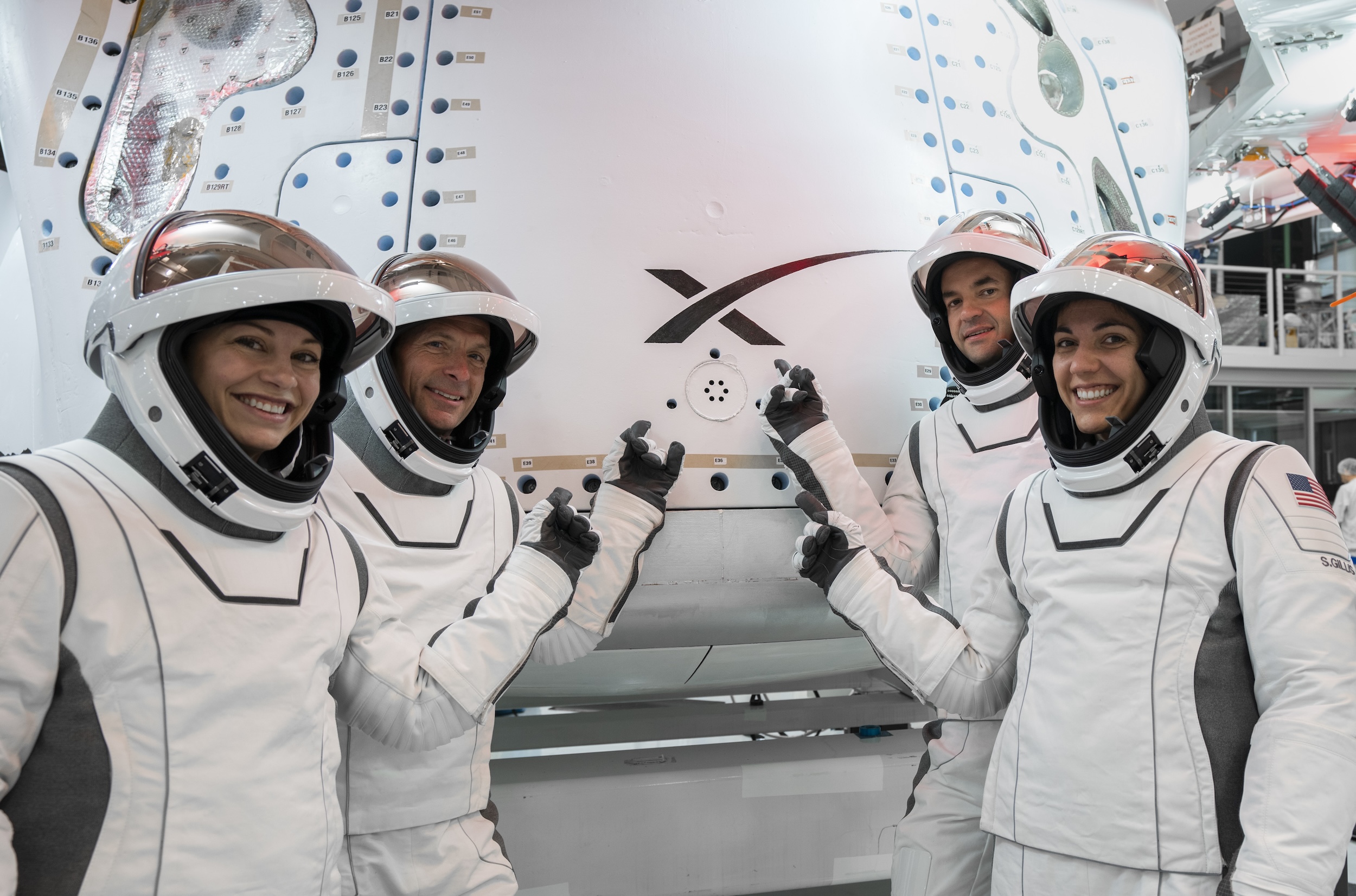I’m a mechanical engineer at SpaceX (Dragon Structures) that's passionate about metallurgy, fracture mechanics, and failure analysis. My research has included microstructural characterization and in-depth investigations of material degradation, including a published study on sustained load cracking in AA6351-T6 aluminum gas cylinders. Professionally, I’ve built experience across aerospace structures, design and simulation, materials testing, and manufacturing. I’m especially interested in how fundamental materials behavior can inform the development of safer, more resilient alloys and engineering systems, and I thrive on challenges at the intersection of aerospace design, materials, and performance.
Click below or scroll to see some of my technical experiences

Polaris Dawn astronauts posing with the SpaceX EVA capsule I worked on which was used in the first-ever commercial EVA.
I am a Dragon Structures Engineer at SpaceX in Hawthorne, CA, where I work on the backshell & parachute region of the vehicle. As a Responsible Engineer (RE), I own many of the parachute deployable systems on the capsule. I perform structural analysis, lead new hardware design efforts, resolve production issues, and support mission readiness and qualification testing. Throughout all of this, I emphasize materials performance, working extensively with both metallics and composites to ensure reliability and safety.
I have previously completed 2 internships at SpaceX:
SpaceX Dragon Structures TrunkShield Internship — Feb ’24 to Apr ’24, Hawthorne, CA
During this internship, I contributed to multiple large-scale projects involving extensive margin and fracture analyses for critical flight hardware, as well as redesign efforts on heatshield flight components for optimized performance and manufacturability.

A SpaceX Dragon capsule post-splashdown on the recovery boat awaiting inspections.
SpaceX Starlink Gateway Reliability Internship — May ’23 to Aug ’23, Redmond, WA
In this role, I contributed to and led multiple projects, with the most significant being the design, manufacture, and qualification of a custom lifting tool designed to replace certain defective/damaged parts on the Starlink gateways.

Polaris Dawn EVA spacesuit mechanics testing.
I served as both Project Manager and Structures Lead for Olin Rocketry, Olin College’s student-led high-powered rocketry team. In these roles, I led the structural design, testing, and manufacturing efforts for dual-deployment rockets competing at the Intercollegiate Rocket Engineering Competition (IREC) in New Mexico. I was responsible for managing overall team coordination and communication between sub-teams to ensure smooth integration and timely progress on competition and test rockets. Alongside structural leadership, I directed systems development and testing, balancing tight competition schedules with the need for precision and reliability. As a senior member of the team, I delivered lectures on core mechanical engineering topics such as finite element analysis (FEA) and computational fluid dynamics (CFD) using Ansys, fluid dynamics, dynamics, hand calculations (including lead screw power transfer, thread shear, margin and factor of safety), and free body diagrams. I also performed extensive materials analysis and testing on composite layups as we were working on a composite strand winding machine. This experience helped me develop strong project management skills, cross-functional leadership abilities, and deep technical expertise in aerospace engineering.

Loading the black powder charges into our Phoenix V-2 rocket and preparing to arm the rocket.
I led most of the team's new development projects such as:

Presenting our most recent rocket and changes to Olin alumni.
Phoenix V-2 launch at RIMRA in RI | Apogee of 550m | Max Velocity of 80m/s
Phoenix V-2 was launched with custom in-house manufactured carbon fiber tubes which were made by wrapping epoxy-saturated carbon fiber fabric around an aluminum mandrel. Once cured, liquid nitrogen was used to release the carbon fiber tube from the mandrel. There is currently an ongoing project on the team to manufacture a tube winding machine which will be used to wrap composite tubes directly from individual filaments. This approach will allow the production of complex shapes, such as nosecones, and optimize strength in different directions by varying the weave patterns.

I can be seen assembling the rocket by use of shear pins and rivets after loading the drogue and main parachutes.
Worked on the RS1 Vehicle Structures team, performing structural analysis, design, and testing for rocket components using FEA/CFD (Ansys, FEMAP) and Siemens NX CAD. Contributed to multiple projects, from hardware redesigns to experimental testing, with a focus on understanding material behavior and ensuring structural reliability.
